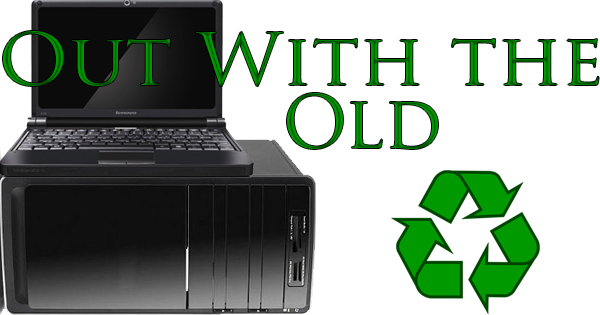 So much of the focus around here is about getting the most out of your current computer. We look at ways to protect it, and keep it humming along without issue. Eventually, though, there comes a time when your current machine needs to be replaced. While we’ve covered what components to look for in a new computer and how to transfer your files, we’ve never actually discussed the steps to take to dispose of an old device. Let’s rectify the situation today by telling you exactly how to safely rid yourself of your old technology.
So much of the focus around here is about getting the most out of your current computer. We look at ways to protect it, and keep it humming along without issue. Eventually, though, there comes a time when your current machine needs to be replaced. While we’ve covered what components to look for in a new computer and how to transfer your files, we’ve never actually discussed the steps to take to dispose of an old device. Let’s rectify the situation today by telling you exactly how to safely rid yourself of your old technology.
Obviously, the first step you should take before unloading a used computer is to make sure you’ve backed up all of your personal files first. The last thing you want to do is lose anything that’s important to you! Read “Let’s Back Up for Backup” to learn exactly what you should be saving and how to accomplish this. If the computer is inoperable, then all I can say is…I hope you were able to save your files before the computer crashed! After saving everything you want to keep from the “old” computer, the next thing to consider is whether you want to sell or donate the computer, or throw it away. I use the term “throw it away” loosely because the proper way to dispose of a computer is by recycling it. Anyway, the key consideration to either option is the computer’s hard drive.
The hard drive is the computer’s memory bank. All of your pictures, documents, photos, videos, music, programs, etc. are stored on the hard drive. Think about your own computer. Do you have saved passwords and personal information that you wouldn’t want to just hand over to anyone on the street? I’m sure that the answer to that is yes. Forget about passwords, I don’t want some creep seeing pictures of my wife on the beach in Barbados! Because of things like this, you need to make sure that no one will be able to access the files on the hard drive after you get rid of the computer. If you’ve decided to sell the computer or donate it to a local church or charity, you’ll need to completely wipe the hard drive before giving it to them. I recommend using the free program Darik’s Boot and Nuke (DBAN) to accomplish this. Click here to visit the download page. The file you download is an ISO file, and it will need to be burned to a disc because the program needs to run when the computer first boots up and can’t be launched from within Windows. Read “In Search of a Burner for ISO Files” to learn how to make the appropriate disc. After you’ve created the disc, put it into the computer, and restart the computer. DBAN will load, and offer five standards of hard drive wiping: DoD 5220.22-M, RCMP TSSIT OPS-II, Gutmann, Random Data, and Write Zero. I usually go with the first option, because if it meets the standards of the U.S. Department of Defense, it should be good enough for me. After disc wiping is complete, the hard drive will be completely blank. If you’re feeling benevolent, you can install Windows. If you’re not, your computer is now safe to give away, and the organization you’ve selected will have to purchase and install the appropriate version of Windows.
In my field, you can imagine that I end up with a nice collection of “well used” (ahem, junk) computers. For my purposes, it’s not worth the time and effort to prepare a computer for sale or donation, so, I usually end up bringing them to the local refuse center to have them recycled. Before I do that, however, I remove and physically destroy the hard drive. It’s impossible to describe how to remove a hard drive in every possible computer out there. The best advice I can give you is to search for your computer’s make and model with the search terms “how do I remove the hard drive in an HP Pavilion HPE”. Be sure to replace HP Pavilion HPE with your own computer’s make and model, of course. Upon removal, I grab a drill and drill four half-inch holes into the hard drive. Let’s see someone try to access that! The size of the drill isn’t that important. Just use something large enough that it won’t be easy to piece back together.
It’s critical to complete wipe or physically destroy a hard drive before letting a computer go from your home or business. Personal information is way too important to take a chance on letting out. If you use DBAN or drill the suggested holes into your hard drive, you can rest easier knowing that your information won’t fall into the wrong hands.
